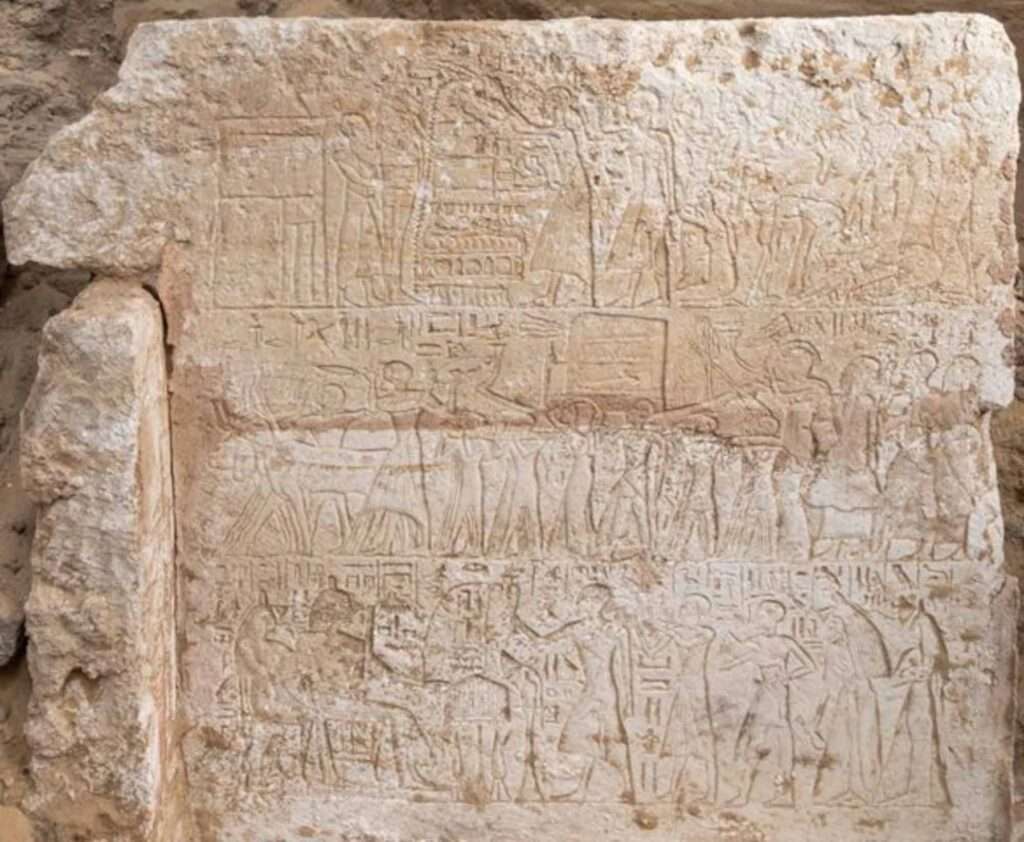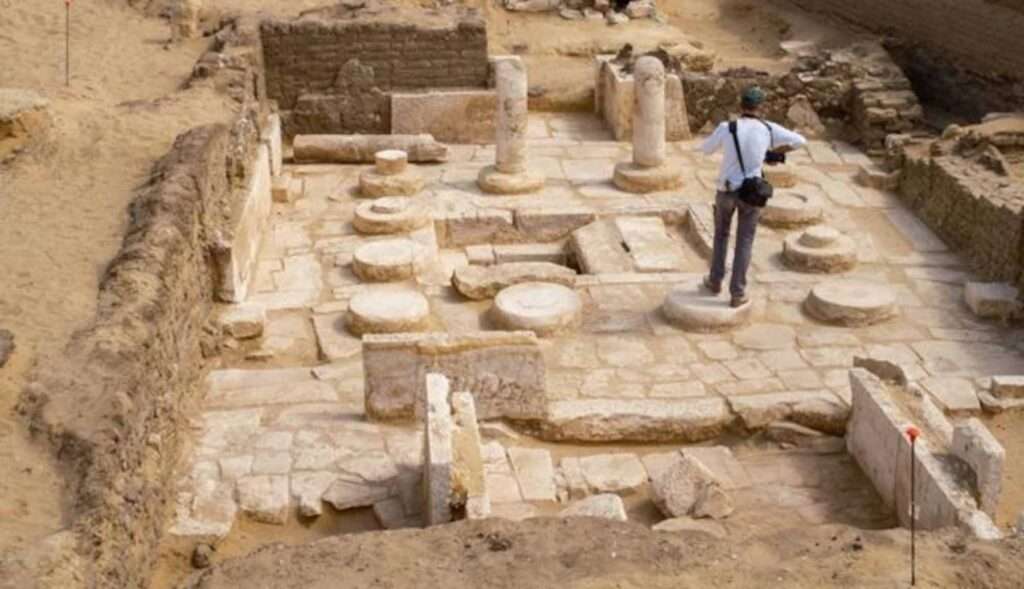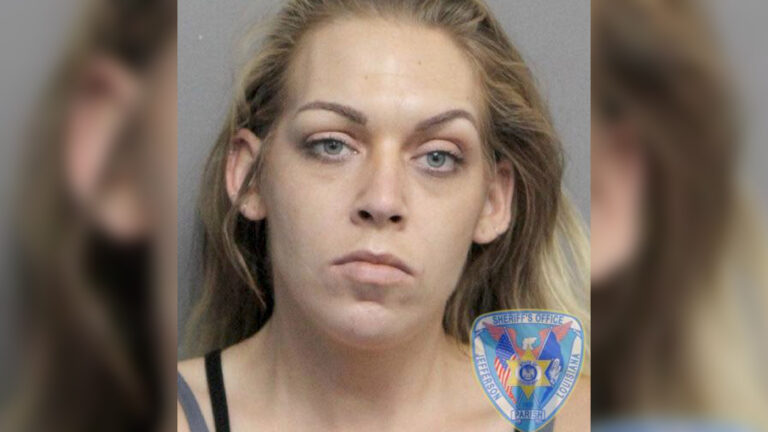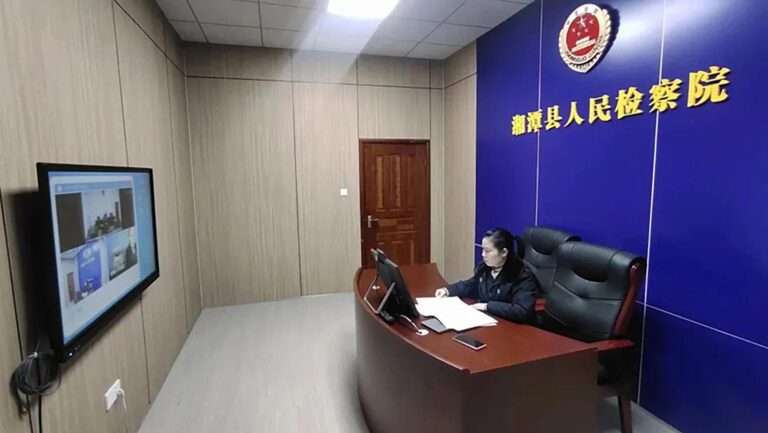Archaeologists have unearthed an astonishing tomb and four small shrines dating back to the Ramesside Period 3,000 years ago at an archaeological site in Egypt.
The Dutch-Italian team working at Saqqara, Giza Governorate, revealed a tomb belonging to an individual named Banhesi.
Experts believe he lived during the Ramesside Period, which began around 3,063 years ago and ended around 1,993 years ago.
A panel found inside the tomb depicts the deceased worshipping the goddess Hathor – a sky deity who crossed boundaries between worlds, helping deceased souls in the transition to the afterlife.

It also includes a scene showing Banhesi and his wife, Baya, standing next to a man wearing a leopard skin over his shoulder.
Egypt’s Ministry of Tourism and Antiquities said in a statement obtained by Newsflash: “The joint Dutch-Italian archaeological mission from the National Museum of Antiquities in Leiden and the Egyptian Museum in Turin, working in the Saqqara archaeological area under the supervision of the Supreme Council of Antiquities, has revealed a tomb belonging to a person named Banhesi from the period of the Ramesside rulers, during excavations carried out at the site during its current season.
“Dr Mustafa Waziry, Secretary-General of the Supreme Council of Antiquities, stated that the mission also succeeded in uncovering a number of other shrines that belong to the same time period.
“This is expected to shed light on the development of the Saqqara cemetery during the Ramesside period and uncover new individuals who were not previously known from historical sources.”
The statement continued: “He added that this discovery supports previous theories that suggest the area between the 18th dynasty tombs (such as the Maya tomb) was reused in later eras to build tombs and shrines during the period of the Ramesside rulers.
“The inscriptions on these structures shed light on the funerary practices of the dead

during that period.
“Regarding the layout of the tomb, Dr Mohamed Youssef, Director of the Saqqara Antiquities Area, explained that it takes the form of a stand-alone temple, with an entrance gate, an inner courtyard containing stone column bases, a well leading to underground burial chambers, and three shrines next to each other.
“Dr Christian Greco, Director of the Egyptian Museum in Turin and head of the Italian side of the mission, added that a panel depicting the owner of the tomb, Banhesi, and his wife Baya, who was known as a singer of Amun, was found inside the tomb.
“It includes a beautiful scene of Banhesi worshipping the goddess Hathor, and below it a scene showing Banhesi and his wife Baya together in front of an offering table, with a bald man standing beside them wearing a leopard skin over his shoulder, in addition to several scenes of priests and offerings.
“Dr Lara Weiss, Curator of the Egyptian and Nubian Collection at the National Museum of Antiquities in Leiden, the Netherlands, said that the mission also succeeded in uncovering the remains of four small sarcophagi, two of which contain a number of inscriptions, one of which belongs to a person named Yoyo.

“Although small in size, they contain a number of scenes and inscriptions that are characterised by their precision and quality of detail, and are in good condition, including a scene of Yoyo’s funeral procession and the revival of his mummy to live in the afterlife, as well as a scene depicting the cow of the goddess Hathor and the boat of the god Sokar, the god of the cemetery.”
To find out more about the author, editor or agency that supplied this story – please click below.
Story By: William McGee, Sub-Editor: Joseph Golder, Agency: Newsflash
The Ananova page is created by and dedicated to professional, independent freelance journalists. It is a place for us to showcase our work. When our news is sold to our media partners, we will include the link here.




